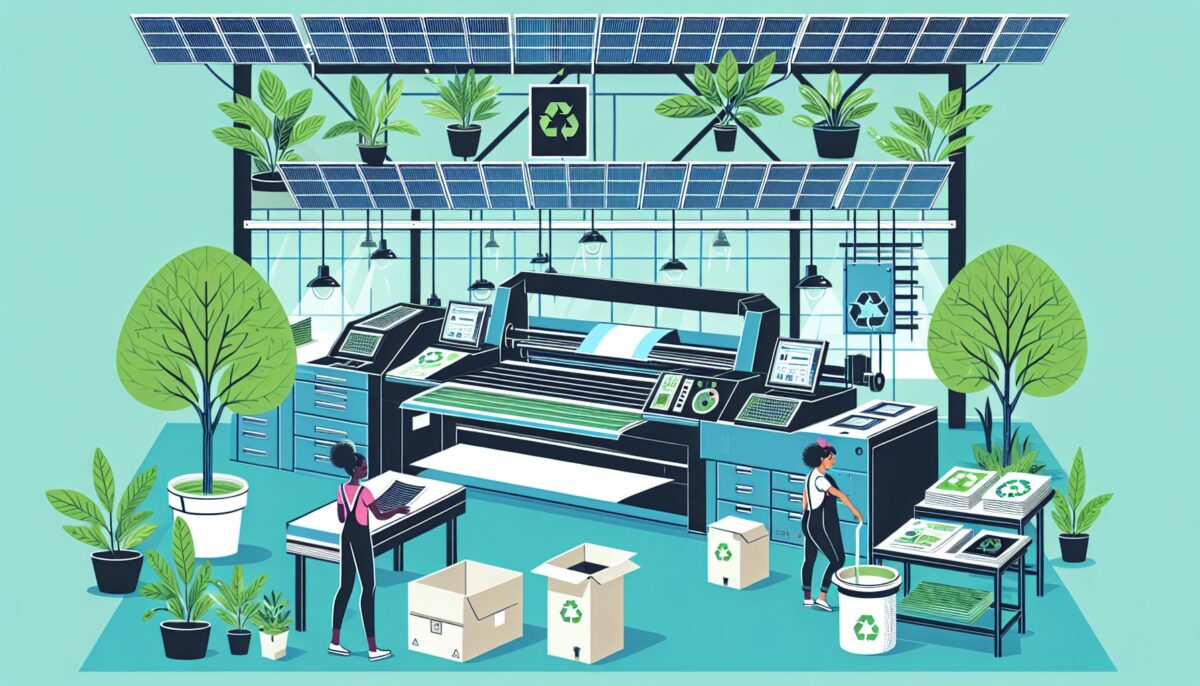In today’s fast-paced world, sustainability has become a hot topic in almost every industry. From food production to fashion, companies are making a conscious effort to reduce their environmental impact and operate in a more eco-friendly manner. The printing industry is no exception to this trend, as more and more companies are looking for ways to make their printing processes more sustainable.
Printing, by nature, is not the most environmentally friendly process. The production of paper consumes large amounts of water and energy, and the use of traditional printing inks can release harmful chemicals into the environment. However, there are steps that can be taken to make printing more sustainable and reduce its impact on the environment.
One way that companies can make their printing processes more sustainable is by using recycled paper. Recycled paper is made from paper that has already been used and recycled, reducing the need for new paper production. Not only does this help to conserve natural resources, but it also reduces the amount of waste that ends up in landfills. In addition to using recycled paper, companies can also look for paper suppliers that use sustainable forestry practices, such as FSC-certified sources.
Another important aspect of sustainable printing is the use of eco-friendly inks. Traditional printing inks contain harmful chemicals such as heavy metals and volatile organic compounds (VOCs) that can be harmful to both human health and the environment. By using vegetable-based inks or soy-based inks, companies can reduce their environmental impact and create a safer working environment for their employees. These eco-friendly inks are made from renewable resources and are biodegradable, making them a much more sustainable option than traditional inks.
In addition to using recycled paper and eco-friendly inks, companies can also make their printing processes more sustainable by reducing their energy consumption. Printing presses and other printing equipment can be energy-intensive, but there are ways to minimize their environmental impact. Companies can invest in energy-efficient equipment, optimize their printing processes to minimize waste, and even use renewable energy sources such as solar or wind power to power their operations.
Furthermore, companies can also consider implementing digital solutions to reduce their reliance on paper-based printing. By using digital platforms for communication and document storage, companies can significantly reduce their paper consumption and minimize their environmental footprint. Digital printing solutions also offer benefits such as on-demand printing, which can reduce waste and eliminate the need for excess inventory.
Overall, sustainability in printing is not just a trend – it is a necessity. As the negative impacts of climate change become more apparent, it is crucial for companies to take action and reduce their environmental footprint. By using recycled paper, eco-friendly inks, energy-efficient equipment, and digital solutions, companies can make their printing processes more sustainable and contribute to a greener future.
In conclusion, sustainability in printing is essential for the health of the planet and future generations. By embracing eco-friendly practices and reducing their environmental impact, companies can play a crucial role in preserving the environment and building a more sustainable future. Investing in sustainable printing practices is not only good for the planet – it is also good for business, as consumers are increasingly demanding environmentally conscious products and services. It is time for companies to prioritize sustainability in printing and work towards a more sustainable future for all.

